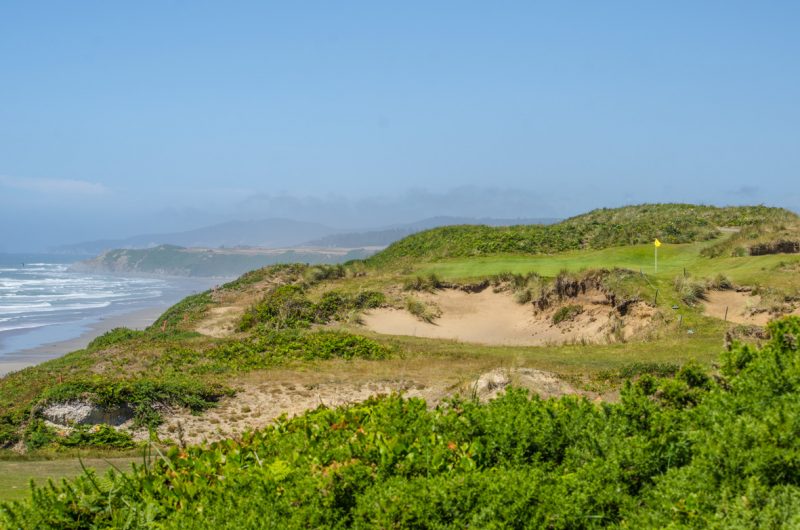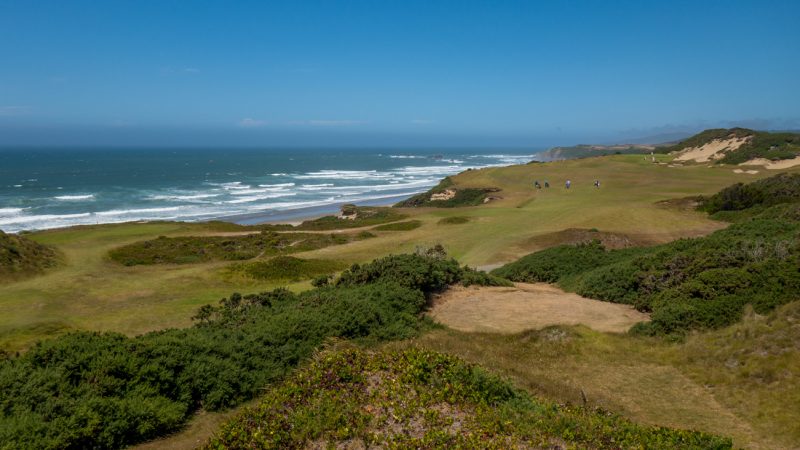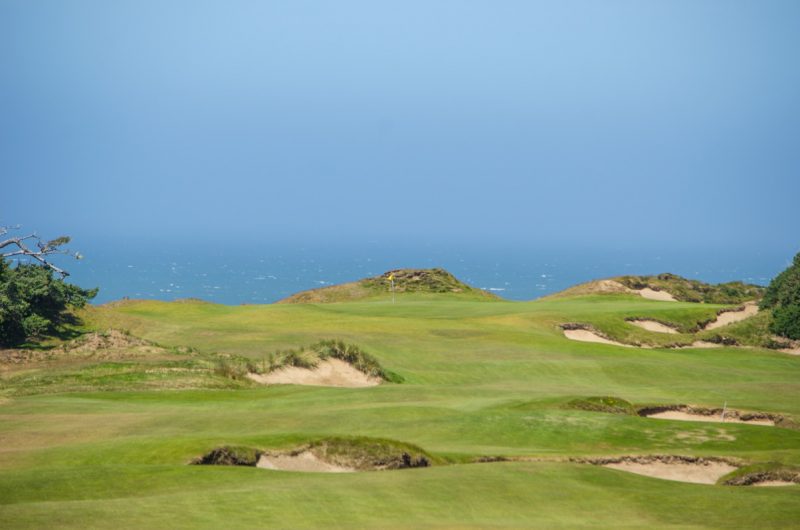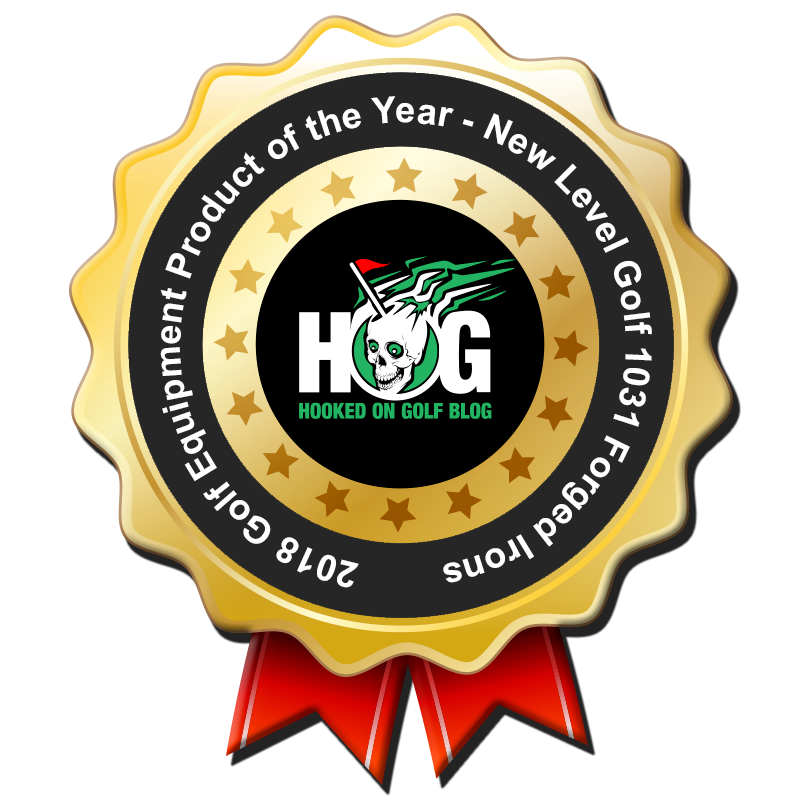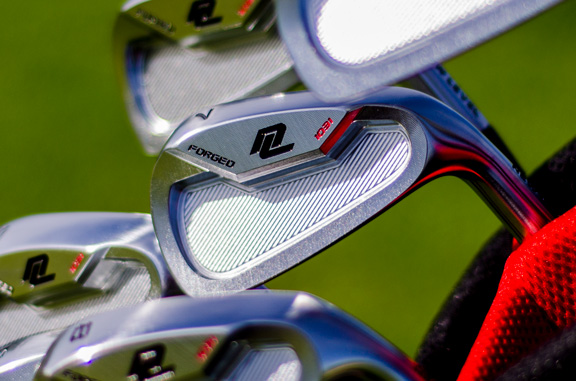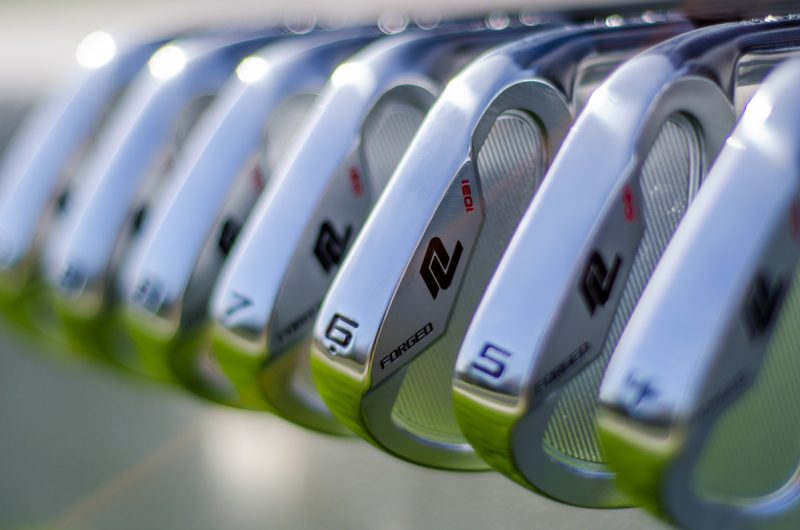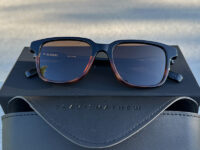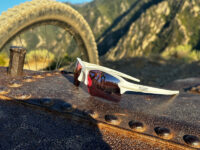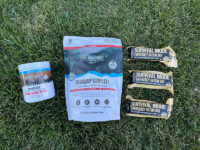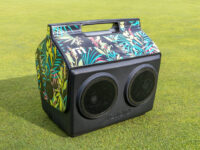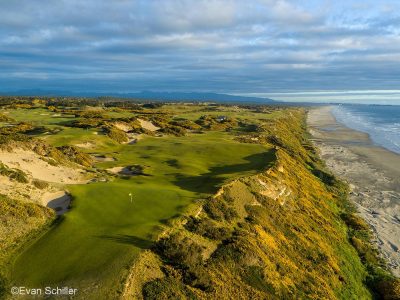2018 Product of the Year – Best Golf Course – Pacific Dunes
Categories: Golf • Golf Course Architecture • Golf Courses • Golf For Women
Tags: Bandon Dunes • Florida • Mexico • Oregon
The HOG Product of the Year for best golf course is a course which was featured/reviewed in the calendar year, and has never been played previously. This year there are some very good courses played on the HOG World Tour, so the winner is certainly the cream of the crop. Here is a list of the finalists for this year, including all of the courses from Bandon Dunes Golf Resort.
Bandon Dunes (Bandon Dunes Resort)
Pacific Dunes (Bandon Dunes Resort)
Old Macdonald (Bandon Dunes Resort)
Bandon Trails (Bandon Dunes Resort)
Bandon Preserve (Bandon Dunes Resort)
Blue Course at Streamsong Resort, Florida
TPC Danzante Bay, Mexico
Red Ledges, Utah
Every course in the finalists list is tremendous. Each has its own personality, great architectural features, and terrific scenery. One course edged out the rest, and boy am I aching to get back there again.
The envelope please….
Pacific Dunes at Bandon Dunes Golf Resort
Hats off to Pacific Dunes, a Tom Doak design located at Bandon Dunes Golf Resort, on the Oregon coast. Pacific Dunes runs right along the coastline, presenting tremendous and stunning ocean views and vistas.
Walking Pacific Dunes is a pure joy, rivaled only by rounds I’ve played in Scotland at Kingsbarns, The Old Course, Cruden Bay, Balcomie Links, Carnoustie, and the other courses at Bandon.
Pacific Dunes plays very links-like. It features tremendous tee shots, fabulous bunkering, and the views are amazing. Perhaps the strongest parts of Pacific are the green complexes and one of the best sets of par-3’s I’ve ever played.
I could reiterate more of my thoughts on Pacific. Instead I recommend simply checking out my Pacific Dunes golf course review here.
Hats off to Bandon Dunes Golf Resort and Tom Doak for claiming the Hooked on Golf Blog 2018 Product of the Year in the golf course category. It’s truly a prestigious and exclusive award.
2018 Golf Equipment Product of the Year Award
Categories: Golf Clubs • Golf Equipment • Golf Gear
Tags: New Level Golf
As 2018 comes to a close I look back at all the products I’ve reviewed here at Hooked on Golf Blog, and post my awards for the best of the best in golf equipment, golf courses, golf apparel, golf accessories and so on.
First off is the Golf Equipment Product of the Year award. “Golf Equipment” is a category which can include golf clubs, golf balls, golf bags, golf carts and such. Typically this award goes to the best golf club, but in this case the award is for the best clubs, as in a set of irons.
Drumroll please…
New Level Golf 1031 Forged Irons
Hats off to the new golf company, New Level Golf for winning the Hooked on Golf Blog 2018 Golf Equipment Product of the Year Award. The 1031 forged irons outshined many great golf products reviewed in 2018. The irons are as buttery and deadly accurate as they are stunningly attractive.
Congratulations to New Level Golf. The HOG awards are some of the most prestigious and exclusive golf awards in the industry.
I look forward to checking out some more products from New Level Golf in 2019.
Swiftwick Ugly Christmas Sweater Socks
Categories: Golf Apparel • Golf Gear • Reviews
Tags: Swiftwick
Apparel scripting is super important, just ask any golf PR firm. I’m not talking just golf apparel scripts either. Apparel scripts for daily life and events really makes a difference. You can make yours and the people’s lives around you better with some good apparel scripting.
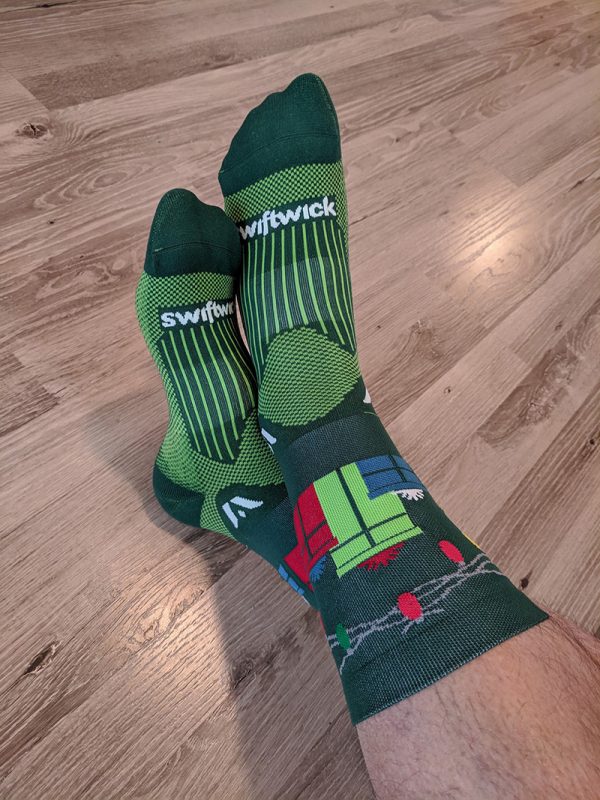
2018 could shape up to be the best Christmas ever for me, because I have a pair of Ugly Christmas Sweater socks from Swiftwick. The Ugly Sweater model is new, and part of Swiftwick’s “Vision Five” line. I finally have some solid sock scripting for Christmas season, or the “holiday season” for you politically correct types.
Construction
The Ugly Sweater is made from 70% nylon, 23% Olefin (no clue what that is), and 7% spandex. Some of the features include:
- Durable Nylon heel and toe
- Lightweight Olefin Fiber wicks moisture and dries quickly>/li>
- Versatile medium cushion delivers lasting comfort
- Seamless toe eliminates friction and irritation
On The Course
These aren’t just gimmick socks. They are performance socks which breathe well, provide moisture wicking, and help with circulation. They’re quite comfortable too.
Final Thoughts
Pick up a pair of Ugly Sweater socks ($19.99) to go with your ugly Christmas sweater.
Galvin Green LARS Interface-1 Golf Jacket Review
Categories: Golf Apparel • Golf For Women • Golf Gear • Golf Lifestyle • Reviews
Tags: Galvin Green
I must admit this review of the Galvin Green LARS Interface-1 jacket took me awhile. You see, in northern Utah we have two seasons: unbearable heat and winter. We are a desert technically, so we don’t get much rain. So testing rain jackets is more of a challenge. And keep in mind, I do on-course testing, not just fly by one-wear reviews of golf apparel.
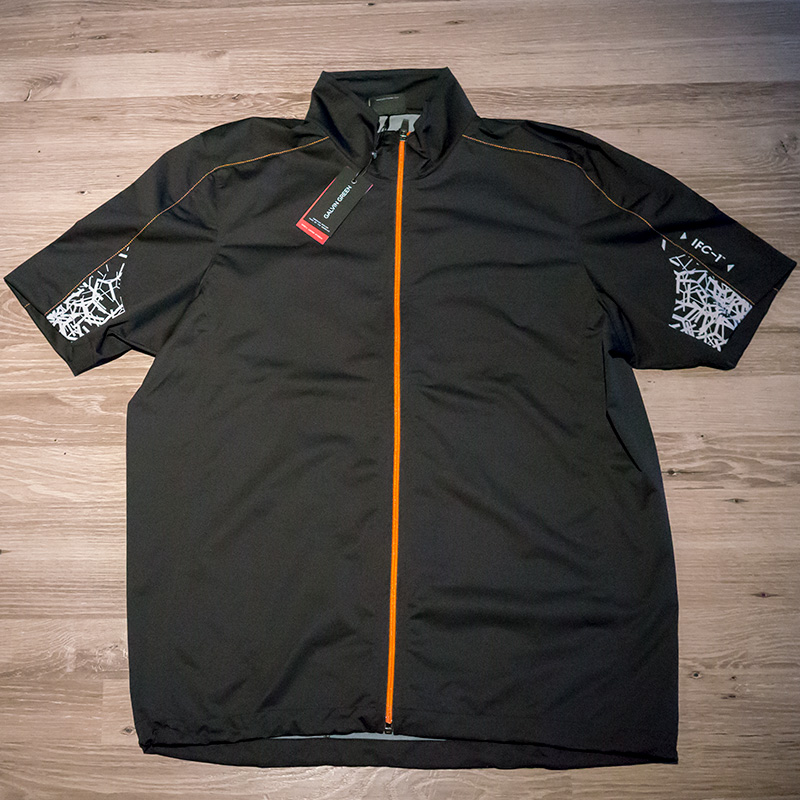
I’ve been thrilled to have the LARS in the bag, in the unlikely event that some rain hits. But due to some traveling to Florida, Bandon Dunes, and Mexico, I’ve had some great rounds logged with the LARS.
LARS Features
This LARS jacket by Galvin Green is a short sleeve windproof, water repellant jacket. LARS is versatile jacket for varying conditions when sleeves are not wanted or needed. The outer layer is a tightly knitted Polyester combined with a polyurethane membrane which is soft and smooth on the inside.
The waist has a draw string which is great for tightening down the hatches and keeping the wind out. I also like to tighten it to keep the garment from interfering with my putting stroke or golf swing.
Colors
LARS comes in three super colors, back (pictured), dark blue, and green.
Sizes
LARS comes in sizes small to triple-XL.
On the Course – On the Town
On one of my recent rounds in Florida a light rain started to fall. The problem is that the temps were about 85 degrees. The last thing I want to do is put on a long sleeve jacket and cook myself to death. The LARS kept my core dry, but allowed me to stay cool, at least physically.
I sported the LARS a ton on my trip to Bandon Dunes this past summer. At Bandon the temperatures were in the 60’s, but with huge amounts of wind. Thanks to the LARS jacket I weathered the high winds well, pun intended. My enjoyment of that tremendous golf destination was aided by having the right apparel for the conditions.
I’ll wear the LARS around town too, when I need to just cut the edge off of some wind or slight chilly conditions.
No matter what the conditions, I find LARS to be extremely comfortable. It performs flawlessly and provides a nice style to my outerwear. Speaking of style…
Style
One note about LARS. The style has a big of an edge to it, with the white graphics under the sleeves and on the back shoulder area. I like that quite a bit. It goes right along with my rock & roll attitude.
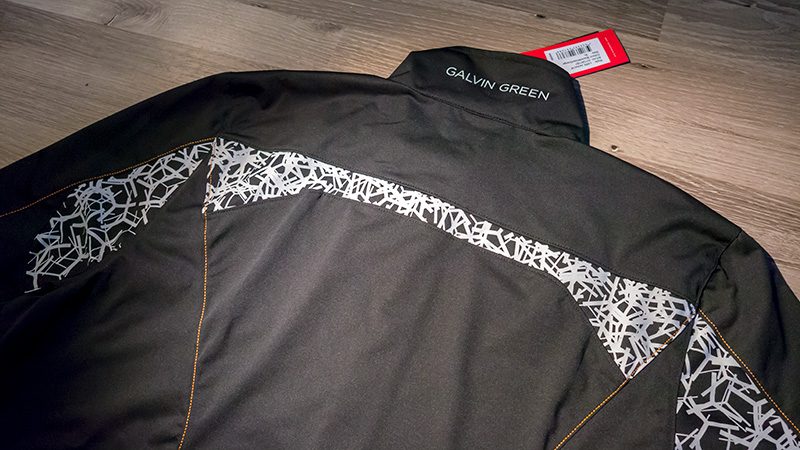
But LARS is certainly not obnoxious or over the top. It’s super classy and sharp looking.
Conclusion
Galvin Green’s LARS Interface-1 jacket lives up to what I expect from Galvin Green. Over the years I’ve reviewed many GG products, and they’re all of the highest quality and design. The price for their products is not cheap. In fact, it’s almost in the “if you have to ask how much it is, it’s probably too much” department. That said, the LARS is worth every penny of its $329USD retail.
Hooked on Golf Blog Celebrates 14th Blogiversary
Categories: Miscellaneous • Site News
Tags: Golf Blogs
On December 5th, 2004 I wrote my first golf blog post. Little did I know that I’d still be at it 14+ years later. I had no idea how many great friends and associates I would make in the industry, how many of the world’s greatest golf courses I would play, how many of the worlds best golf destinations I would visit, and how many great pieces of golf gear I’d review.
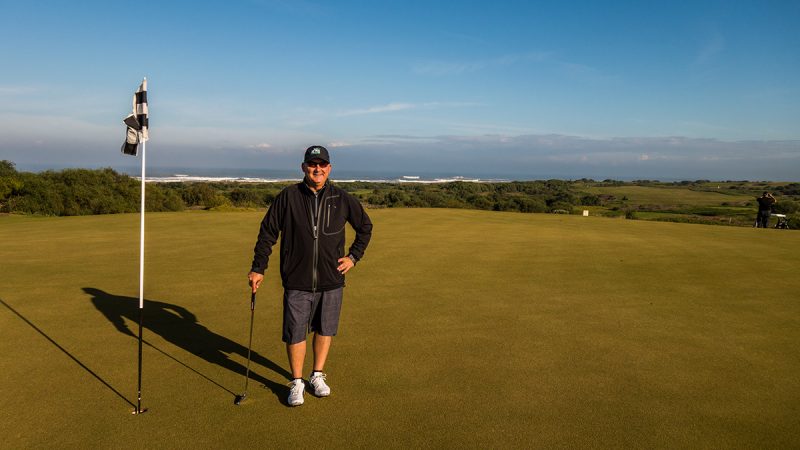
Lucky? Nope.
People say I’m “lucky” to have these great experiences and opportunities. I disagree. Luck has nothing to do with it. It’s all about hard work and dedication.
There have been hundreds of golf blogs over the last 14 years which have come and gone. People think running a quality blog is easy. It isn’t. I work hard to produce original, quality, honest content. I take pride in capturing my own pictures for 99.9% of my features, whether it is a fantastic golf resort in the Bahamas or a bag of golf tees. I spend a lot of time testing equipment. Weeks. Months even. I don’t do the “three swings on the practice range” type of reviews.
Perhaps that’s why HOG is trusted by its patrons.
Without a doubt the best part of my 14 years of golf blogging, is the tremendous friendships I’ve made. From tour pros, course pros, equipment makers, PR people, fellow bloggers, to caddies on the Old Course in St. Andrews, I’ve got special friends all over the world I would have never met had I not started this humble blog back in 2004.
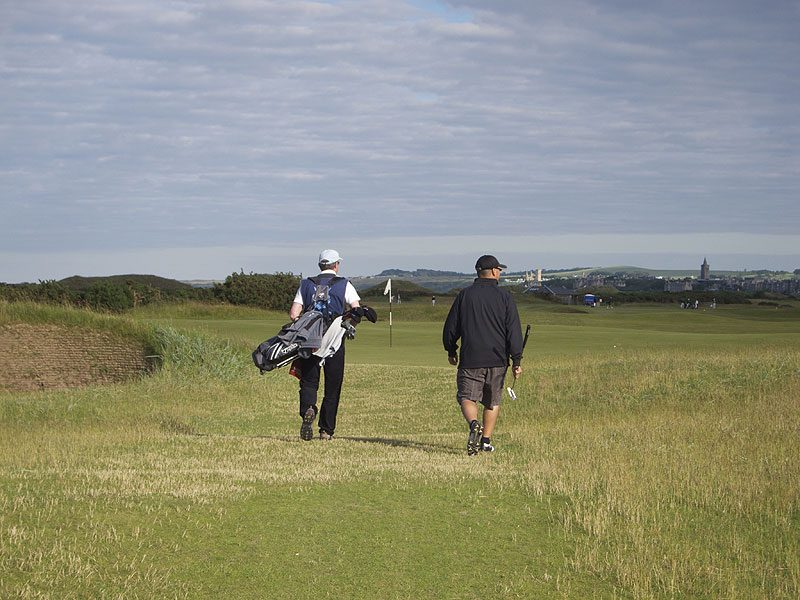
The Future
I’m anxious to see what the future holds for HOG. What new countries will I visit this year? What new world class golf course will I review? Who will I have the pleasure of getting to know next? What groundbreaking golf gear will I test out this year?
Thank YOU
To you, my patrons (not readers… you know, like the Masters), I greatly appreciate your loyalty and patronage.
See you on the golf course.
« Previous 1 … 46 47 48 49 50 … 1,165 Next »


